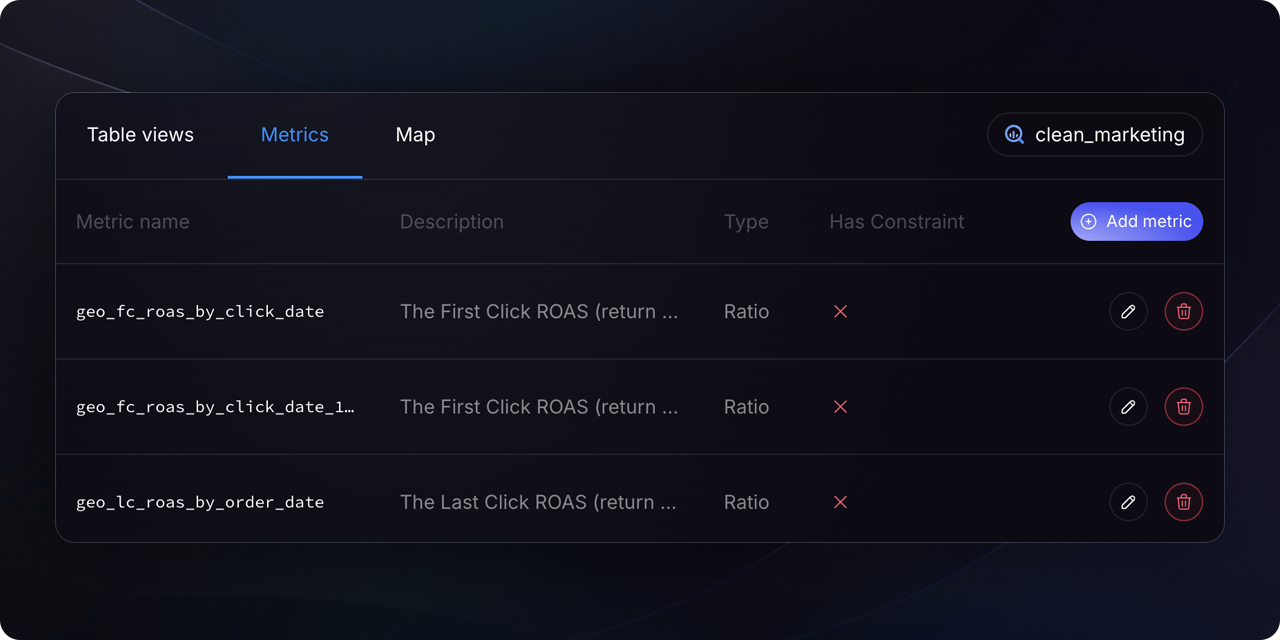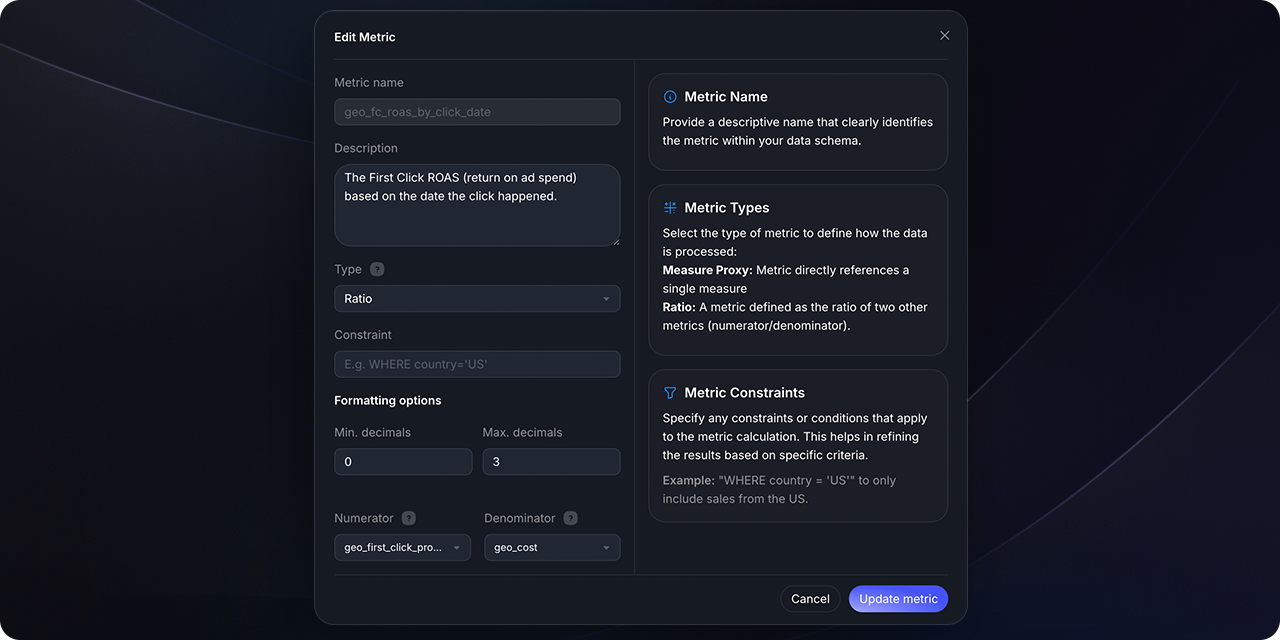Introduction to Metrics
Metrics provide quantifiable measurements to gauge performance, behavior, and other essential information. They facilitate in-depth analysis by offering insights not readily apparent from raw data.Defining Metrics
Defining metrics involves several key parameters:Name
The reference name for the metric, which must be unique across all metrics.
Description
A detailed overview of the metric.
Type
Type of metric (simple, ratio, cumulative, derived).
Type Parameters
Parameters specific to each metric type.
How to create and edit a metric
In the Catalog section, click theManage button on the desired data source. Then, navigate to the Metrics tab to create or edit a metric.

 To better understand the structure, here’s an illustrative example of a metrics specification:
To better understand the structure, here’s an illustrative example of a metrics specification:
Supported Metric Types
Findly supports various metric types:- Simple Metrics
- Cumulative Metrics
- Derived Metrics
- Ratio Metrics
Simple metrics directly reference a measure. They can be thought of as a function accepting a single measure as input.Example:
When creating metrics, maintain consistency in definitions. Avoid overlapping
names and ambiguity to ensure clarity.
Conclusion
Metrics are crucial for deriving actionable insights. Understanding the various metric types and their definitions will enable you to build comprehensive data models.FAQ: Can the same metric name be used across different semantic models?
FAQ: Can the same metric name be used across different semantic models?
No, metric names should be unique across all semantic models to prevent
ambiguity and ensure clarity in analysis.

